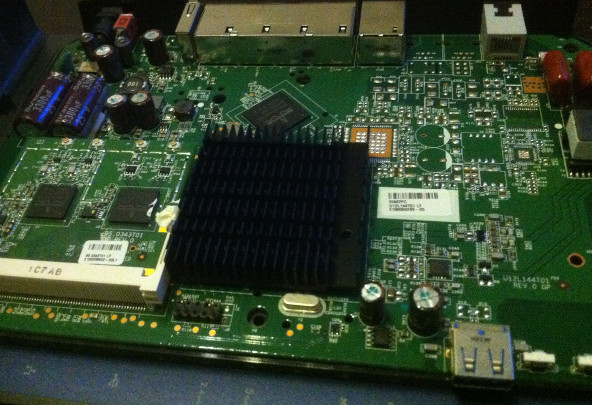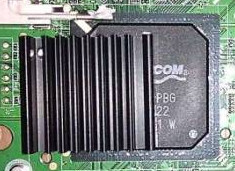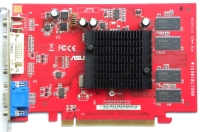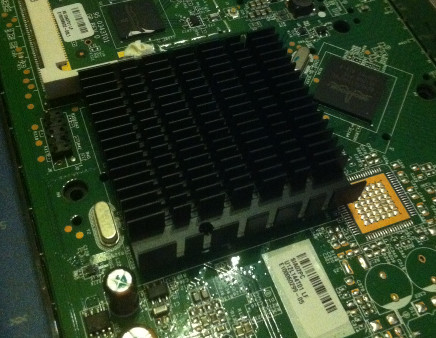DGND3700 V1 BCM6368 CPU-Heatsink Mod
Contents
The Problem
Looking at other routers based on the BCM6368 they appear to have larger heatsinks covering the whole chip, and often people seem to think this isn't enough. And this one in Chinese (run it through google translate). I wondered if this was effecting the stability on the DGND3700 with its little half-heatsink so did this pretty simple mod to see if it made a difference.
Remove old pidly heatsink
- Desolder the metal pin from the board that attaches the existing half-heatsink (you can see the hole in below pic , between the CPU and the pin header)
- CAREFULLY wiggle it backwards and forwards until it comes off (may need to heat to soften the thermal pad's glue)
- Clean any residue with degreaser
Leaving this (note the crystal oscillators bottom left and top right of chip, which are proud of chip's top and hence limiting factors)
Donor Card
- Ideally choose something that fits within the confines of the space, the DGND3700 is limited by the crystal oscillators.
This Radeon X300SE was the most suitable size I had at hand and as the heatsink was stuck on with clips and paste, also easy to clean.
I did however have to trim one side off it to fit flush up against the miniPCI slot for the wireless card.
Attach new heatsink
- Clean donor heatsink with degreaser (iso propyl alcohol or acetone)
- Attach with some form of epoxy, I used just normal Araldite* & clamp.
*It is an extremely thin layer so its low thermal conductivity will be almost irrelevant, plus it fills in uneven surfaces) Ideally use some sort of thermal epoxy.
Araldite epoxy thermal conductivity is 0.3 to 0.5 Wm-1K-1 and thermal epoxy 0.8 to 1 W/m-1K-1 so not massive difference as large surface area and not massive amounts of heat.

The original heatsink has been cut down to ~50mm wide to fit flush up to the miniPCI slot (and is unchanged from original ~55mm height, ~10mm depth)
Outcome
Quantitative assessment? Didn't bother, in hindsight probably should have :)
At least for me, it doesn't seem to have have made any difference - (although it is on the floor and it is wintertime, so perhaps was not getting overly hot to begin with.)
At the time of writing the only way I can get the 'line drop death spiral' [the failure mode] is by sustained I/O such as having some torrents going and then transferring multi gig files via NFS. From this experiment I can only assume it is probably not heat related, so could be hardware fault or software bug....
Comments
blog comments powered by Disqus



